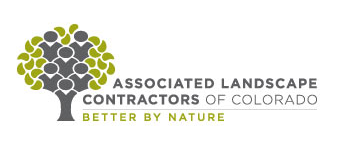| Effective winter preparation requires practice and good communications |
 |
| Written by Colorado Green Now/Designscapes Colorado |
| Sunday, October 20, 2024 12:00 AM |
|
The name of the game in the snow and ice management industry is preparedness. With high performance comes great planning and preparation of your personnel, equipment, procedure and training programs. To make sure you meet your client's expected level of service, you will need to take the time to prepare and communicate your processes and expectations with everyone involved in snow and ice operations. Scheduling of Winter Preparation Activities When creating the preparedness schedule, be cognizant of the responsibilities and seasonal work transitions for the rest of the organization. As you plan meetings and trainings, as well as testing site prep, work with the team so people can make the time to attend, while giving snow preparation their utmost attention. With the transitioning of activities, it can be difficult to get others in the mindset of snow when it's 90 degrees outside. While everyone who has been in the industry for years knows the routine, there may be challenges that you must be aware of. Communicate the importance of preparing, while respecting others' daily responsibilities. With that said, start planning early! Don't wait until September to start the process...too much is happening to have it all come together quickly. One of the best key indicators of designating a planning start date is the size of your organization and if you perform landscaping or construction services throughout the year. Develop a Winter Prep Strategy Your winter prep strategy should include planning procedures, processes and communication. The onset of your strategy development does not need to be a lengthy booklet or procedural guideline but rather a one-sheet plan of what you need to do and how you will achieve it. The most integral starting point is to identify key internal stakeholders who will help build your preparation plan and carry out all objectives. Include department managers, supervisors, foreman, lead roles and any other necessary personnel who have a level of decision-making, even if they aren't the highest decision-makers. Next, create the list of required components within the plan by highlighting main categories such as:
This isn't an inclusive list; add or change anything that is unique to your organization. Personnel Needs and Training Requirements Work with your team to identify the personnel needed for snow and ice operations, and what training is to be performed. Identify snow supervisors, account managers, drivers, equipment operators, and shovelers early so you can formulate a complete training schedule. Much of the training can be completed prior to the first snow event, but there may be situations where you need to perform live, hands-on snow and ice training. You may have to retrain to adapt if equipment, processes, materials or new sites are added. Equipment Needs We all know the importance of identifying equipment that is necessary to snow and ice operations. Create inspection lists for vehicles and equipment, a schedule for all departments, and coordinate repairs before the first winter event. Ensure inspections are completed early so you have time to order the necessary parts for repairs; have time to repair all vehicles and equipment; and perform final tests before putting them into action. This is another complicated process if much of your equipment is also being used during the summer and fall for other services. Site Planning and Level of Service Requirements While some sites may be comparable, many sites are unique and pose different risks and challenges for snow and ice operations. Don't take anything for granted; and don't assume you know everything about your personnel, site or clients in preparing for winter. Take your time to walk all properties with the client, and look for any potential risks, hazards, property changes, alterations or damage prior to performing any services. One of the most impactful situations to all parties is when a property change has taken place since the last snow season, and nobody accounted for it going into the next season. This could be pavement changes, drainage alterations, property damage, missing or added signage, or anything that may change how winter service is performed. Once you've completed your site walk with the client, created site maps, and identified the driver, operator or personnel responsible for the site, take the crews out and perform dry runs and walkthroughs to ensure everybody knows who will be there, what services encompass and what risks to look out for. Event Planning Planning for different types of events may be challenging, especially since weather patterns, frequency and severity are ever changing. It is best to create a few scenarios of how response efforts may take place. I would recommend starting with five levels of event severity and planning that take into account factors such as:
Another objective is communicating early, frequently, and when necessary, and including all relevant information to streamline the process. Communication is vital in determining the schedule for personnel and equipment prep, site planning, carrying out meetings and training for your snow and ice operations. On a final note, remember that people communicate differently, and you should identify the most effective channels. Whether it is in person, hands-on, visual, auditory, email, phone calls or text messages, keep track of the communication preferences of those you work with, and those you have contracted with to perform snow and ice services.
Read more in this issue of Colorado Green Now: Women in Green: Floral Workshop Brings Industry Professionals Together 2024 CSU Annual Trial "Best Of" Winners Colorado Waterwise recognizes ALCC CEO for conservation efforts |


